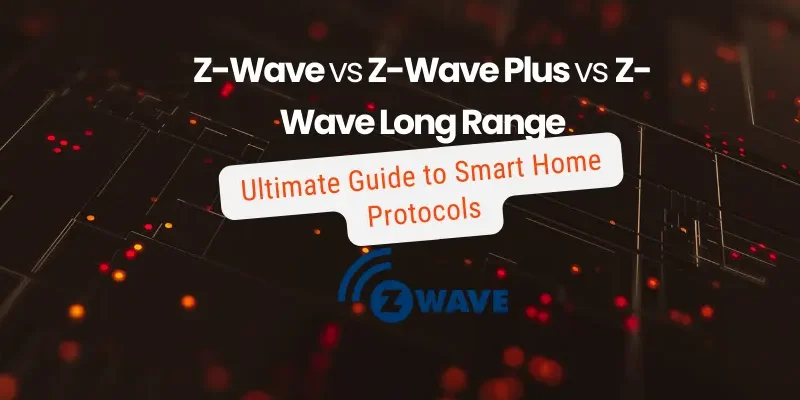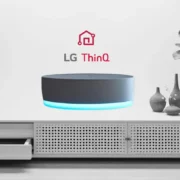As you explore options to make your home smarter, you might come across terms like Z-Wave, Z-Wave Plus, and Z-Wave Long Range. Understanding these can be quite overwhelming. This article will help you navigate through these technologies, providing you with basic insights into their differences, benefits, and how to choose the right one for your home.
Table of Contents
What is Z-Wave?
Z-Wave is a wireless communication protocol specifically designed for home automation. Created to allow devices such as lights, locks, thermostats, and sensors to communicate with each other efficiently and securely, Z-Wave operates in the sub-GHz frequency range. This helps it avoid interference from common household devices like Wi-Fi routers and microwaves.
Key Features of Z-Wave:
- Mesh Network: Devices create a mesh network, where each one acts as a repeater, extending the range and reliability of the network.
- Interoperability: Devices from different manufacturers can work together seamlessly, thanks to a strict certification process.
- Low Power Consumption: Ideal for battery-operated devices due to its energy-efficient design.
- Security: The protocol employs AES-128 encryption, ensuring secure communication between devices.
Understanding Z-Wave Plus
Z-Wave Plus, also known as the 500 Series, is an enhanced version of the original Z-Wave protocol. It was introduced to offer improved features and performance over its predecessor.
Improvements in Z-Wave Plus:
- Increased Range: Devices have a 50% greater range than standard Z-Wave devices.
- Faster Communication: Offers a 250% improvement in bandwidth, resulting in faster communication between devices.
- Extended Battery Life: Enhanced battery life for battery-operated devices.
- Better Diagnostics: Improved diagnostics and troubleshooting capabilities.
- Increased Channels: Utilizes additional RF channels, reducing the likelihood of interference.
Exploring Z-Wave Long Range
Z-Wave Long Range (LR) is the latest advancement in the Z-Wave protocol family. It is designed to address the limitations of range and scalability in large properties and installations.
Key Features of Z-Wave Long Range:
- Extended Range: Offers a range of up to 1 mile (1.6 km) in open air, significantly surpassing the range of Z-Wave and Z-Wave Plus.
- Increased Node Capacity: Can support up to 4,000 nodes, making it ideal for large installations.
- Optimized for Battery Devices: Designed to support battery-operated devices with extended battery life.
- Backward Compatibility: Works with existing Z-Wave and Z-Wave Plus devices.
Key Differences Between Z-Wave, Z-Wave Plus, and Z-Wave Long Range
Understanding the differences between these protocols can help you decide which one best suits your needs. Here are the key distinctions:
| Feature | Z-Wave | Z-Wave Plus | Z-Wave Long Range |
|---|---|---|---|
| Range | Up to 100m | Up to 150m | Up to 1 mile |
| Bandwidth | 40 kbps | 100 kbps | 100 kbps |
| Node Capacity | 232 nodes | 232 nodes | 4,000 nodes |
| Battery Life | Standard | Improved | Extended |
| Channels | 1 RF Channel | Multiple | Multiple |
| Security | AES-128 | AES-128 | AES-128 |
| Backward Compatibility | Yes | Yes | Yes |
Benefits of Each Protocol
Z-Wave:
- Affordable: Generally less expensive than newer protocols.
- Reliable: Established technology with a robust ecosystem of compatible devices.
Z-Wave Plus:
- Enhanced Performance: Improved range, battery life, and communication speed.
- Better Diagnostics: Easier troubleshooting and maintenance.
Z-Wave Long Range:
- Ideal for Large Properties: Extended range and high node capacity make it perfect for large installations.
- Future-Proof: Supports a larger number of devices, catering to future expansions.
Choosing the Right Protocol for Your Smart Home
Consider the Size of Your Home
Selecting the right Z-Wave protocol depends on various factors such as the size of your home, the number of devices you plan to connect, and your specific needs.
- Small to Medium Homes: Z-Wave or Z-Wave Plus should suffice. Z-Wave Plus offers better performance and is a good choice if you have many battery-operated devices.
- Large Homes or Properties: Z-Wave Long Range is the best option due to its extended range and high node capacity.
- Future-Proofing: If you plan on expanding your smart home network significantly in the future, consider starting with Z-Wave Long Range.
Future of Z-Wave Technology
Z-Wave technology continues to evolve, with new advancements focusing on improving range, security, and interoperability. The introduction of Z-Wave Long Range is a testament to this ongoing innovation. As smart home adoption grows, Z-Wave’s robust and secure communication protocol will likely remain a cornerstone of home automation systems.
Frequently Asked Questions
Z-Wave, Z-Wave Plus, and Z-Wave Long Range each offer unique benefits tailored to different smart home needs. Understanding their differences and advantages will help you make an informed decision, ensuring your smart home operates efficiently and reliably.
For more information on Z-Wave devices, visit the Z-Wave Alliance.
By understanding these protocols, you can make an informed decision that best suits your smart home needs. Whether you opt for the classic Z-Wave, the enhanced Z-Wave Plus, or the robust Z-Wave Long Range, your home will benefit from a reliable and secure automation network. Happy automating!












Comments